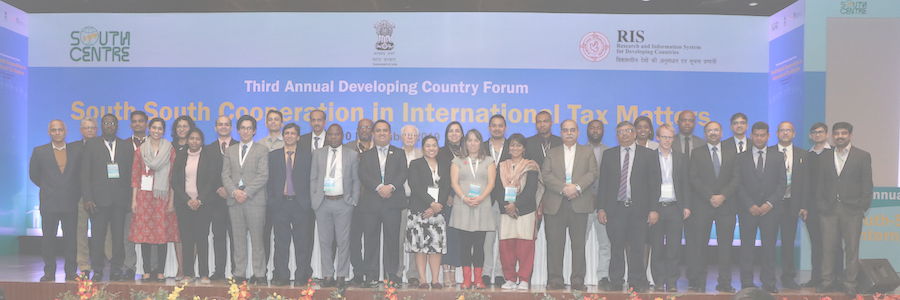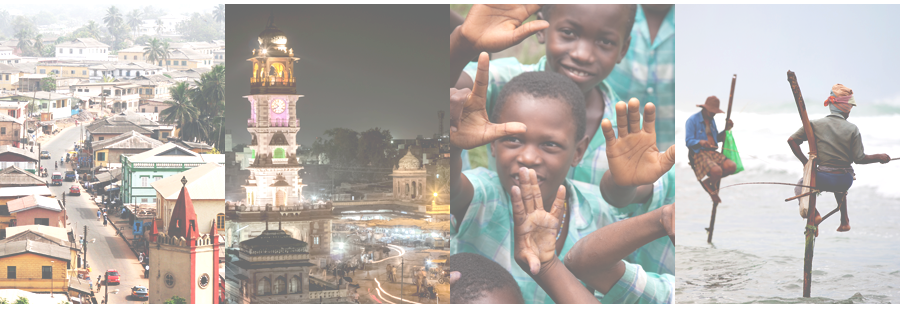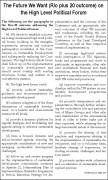Elements We Should Have in the High Level Political Forum on Sustainable Development (HLPF)
[South Centre Paper on Rio+20 Issue]
One of the key follow-up issues from the Rio+20 Summit of June 2012 is the establishment of a new High Level Political Forum on Sustainable Development (HLPF). It is meant to replace the present Commission on Sustainable Development (CSD) with a stronger and more effective organisation to coordinate the United Nations’ work on sustainable development. There is however a danger that the HLPF will be weaker than the CSD and thus be unable to fulfill the functions mandated by the Rio Summit.
This paper by the South Centre presents the case for a strong HLPF and makes proposals on its structure and programme of work.
Introduction: The HLPF is one of the most important outcomes of Rio+20, and perhaps its most important. It provides UN Member States with the opportunity to set up an architecture that is effective and that can meet up to the present challenges in sustainable development (including the present multiple crises in the economic, social and environmental areas) and the even larger challenges that loom in the future. This concept note examines the functions mandated by Rio+20 for the HLPF and how these functions can be implemented, including the structural issues (high-level events, committees, secretariat, etc), the types of meetings and time required for them, the need for a dedicated body, the national and regional institutions and activities, and the arrangements for meeting the mandated functions. The areas required to be covered are many; this concept note is a preliminary attempt to provide views on some of the issues.
HLPF is mandated to have many important functions: Before deciding on structures of the HLPF, it is important to consider the functions of the HLPF. The Rio+20 Outcome Document (para. 85) affirms twelve important functions including for the HLPF to be a dynamic platform for regular dialogue, stocktaking and agenda setting; to have an action-oriented agenda including considering new and emerging sustainable development challenges; to follow up and review the implementation of commitments contained in Agenda 21, JPOA, the outcomes of other major UN conferences and summits as well as their respective means of implementations; to provide system wide coherence on sustainable development; provide political leadership, guidance, and recommendations for sustainable development; enhance integration of the three dimensions of sustainable development at all levels; enable consultations with Major Groups and stakeholders; enhance decision-making at all levels and capacity building for data collection and analysis in developing countries.
Regular High-level Events: The HLPF is envisaged to hold a high level event during the High Level segment of the UNGA regularly to attract the participation of heads of state and government and/or Ministers. The meeting at level of heads of state could be once in two years or so; and in the year or years in between it could be at the level of Ministers of the relevant Ministry or Department, depending on the main theme for that year. For this high level event to be successful, it is necessary to have many meetings (backed by an adequately funded and well-structured secretariat) over regular intervals during the year to discuss substantive issues relating to sustainable development. Ministerial-level meetings can also be organised during the course of the year on issues that emerge from the regular work during the year, i.e. when important issues or developments demand such a Ministerial meeting of the Ministers from the relevant departments or Ministries.
Follow up to the High-level Events: Given the important functions as agreed in the Rio Summit, the HLPF must not be just a “talk shop” made up of roundtables or panel discussions, without taking decisions and devoid of decision-making authority. Rather, the high-level event with high political involvement should provide the leadership and the catalytic role to enable actions, that are earlier planned by representatives, or that are proposed by the leaders themselves, to proceed. Thus there also has to be follow up actions after the high-level event.
Decision-making function: The HLPF should therefore have the mandate to make decisions, through an intergovernmental mechanism and process. This has been provided for in the functions of the HLPF agreed to in the Rio+20 outcome.
Types of Meetings and Allocation of Time for Meetings: There should be enough time allocated for meetings during each year. Meetings should be carried out over a sufficient period of time to cover its mandated functions, including meetings:
- to prepare the annual high-level event
- to provide a platform for regular dialogue, stocktaking and agenda setting
- to discuss and decide on critical and emerging sustainable development issues
- on implementation of Rio plus 20, Agenda 21, and outcomes of other UN conferences
- on the follow up to outcomes of SDGs and the Development Agenda
- meetings on each of the pillars or dimensions of sustainable development (economic, social and environmental), which could be structured according to working groups or committees
- on finance, technology and other Means of Implementation
- to provide political leadership, guidance, and recommendations
- on coordination and coherence of UN system activity on sustainable development.
The number of days to allocate for the HLPF to meet during the year should depend on the functions and activities of the HLPF, as mandated by the Rio plus 20 outcome and as subsequently developed by member states. It would have to be more than the number of days that the CSD has been meeting (two or three weeks in a year). It should be noted that the Human Rights Council meets for over 200 days in the year.
Secretariat: The HLPF needs the support and the servicing functions of a strong Secretariat. At the least the present staff of the CSD (about 60 staff positions) should be re-allocated to the HLPF, as and when the CSD closes. It is important that there should be no loss of CSD staff positions, as these will all be required to serve the HLPF which clearly has more functions as well as enhanced functions compared to the CSD. It should be noted that the Rio+20 outcome mandates that the HLPF will build upon the strengths and resources of the CSD.
Structures of the HLPF: In line with the 3 pillars of sustainable development, the HLPF could have 3 committees, one focusing on economic issues, one on social issues and one on environmental issues. There should be an additional general committee focusing on cross cutting issues and the integration of the issues of the three committees. Sufficient time should be allocated for the meetings of the committees. The Forum could also have a Bureau comprised of members nominated by the UN regional groups.
Means of Implementation: The key development issues including Means of Implementation (MoI) should be given prominent place in the structures of the HLPF and in its priority issues, meetings, and implementation mechanisms. Working groups on finance and technology could be established.
SDGs and Development Agenda: The HLPF should be the institutional venue to discuss and decide on the follow up for the Rio plus 20 summit (including the SDGs) and the Development Agenda outcome.
CSD and the HLPF: The Rio+20 outcome states: “We decide to establish a universal intergovernmental high level political forum, building on the strengths, experiences, resources and inclusive participation modalities of the Commission on Sustainable Development, and subsequently replacing the Commission.” The first difference between HLPF and CSD is that HLPF is a universal body whereas CSD had limited membership. The second difference is that HLPF is envisaged to be higher-level in that it will have regular events at high political level. Then it is envisaged that HLPF will build upon the CSD, including its resources, implying that it is envisaged to be stronger (and more effective) than the CSD. Thus the HLPF should have resources in terms of Secretariat strength and the time for meetings that are larger than CSD. It is also important that the CSD must not be prematurely closed until the HLPF is established and operational to avoid an institutional gap.
Dedicated Body with clear structures of its own: The HLPF should be a dedicated body or organ, with its own clear identity, and with the ability to take decisions. One of the strengths of the CSD is that it has been a dedicated body (a UN Commission) with a recognisable identity with its own meetings, an inter-governmental structure that takes decisions, and a Secretariat servicing it. In the UN experience, processes which do not take decisions or have its own dedicated body have had low profile, faded away or are relatively ineffective (for example, the FFD). This should not happen to HLPF. The characteristic of having its own dedicated body and structures is an issue to consider when determining where and how to locate the HLPF within the UN system.
Universal Membership: The Rio+20 Outcome has decided that the HLPF would be a universal inter-governmental body. This is a clear and important difference with CSD, which has a limited membership. ECOSOC also has a limited membership. The decision to make the HLPF a universal body is presumably to enable it to be more inclusive, as all UN member states can participate as a single tier. The issue of universal membership is a key aspect to consider when deciding where to eventually locate HLPF (GA, ECOSOC, hybrid).
If decision making is an important element of the HLPF, and the HLPF is a universal body, then that universality requires GA rules at least with regard to processes or events with a decision-making component. The preparatory process (for the high-level event) and the decision making process for other issues would be under GA rules. Other aspects of the HLPF work that do not involve decision-making (eg sharing of experiences; reporting) can also be carried out under ECOSOC structures.
National and Regional Activities: Design, planning and implementation of sustainable development at the national level is critical to the real effect for sustainable development. Thus the HLPF should allocate adequate personnel and financial resources and advisory services to the promotion and enhancement of the institutional structures and policies at national level. The regional institutions, especially the UN regional commissions, should also play a leading role in supporting the national efforts as well as having regional meetings to bring the countries together and to promote regional analyses and activities that are in line with regional realities and priorities. The national and regional activities should be informed by the international-level processes, and in turn their outcomes should also input into the international-level meetings and processes.
Inclusiveness and participation of stakeholders: Stakeholders should be given appropriate space and opportunity to take part in various meetings. The Rio+20 outcome mandates that the HLPF builds on the “inclusive participation modalities of the CSD” (para 84). It also mandates that the HLPF “promote transparency and implementation through further enhancing the consultative role and participation of Major Groups and other relevant stakeholders at the international level in order to better make use of their expertise” (para 85 h). The implication is that the HLPF should inherit the CSD interaction modality and structures with the 9 major groups, and enhance these.
Implementing or arranging for the mandated functions: The HLPF should allocate time, resources and meetings and arrange the modalities for implementing the functions mandated by the Rio+20 outcome, including in the following areas:
(a) Political leadership and guidance: The Rio +20 outcome states that the forum could “provide political leadership, guidance and recommendations for sustainable development”. Modalities should be worked out on how to organise the high-level political events and how to follow up on the conclusions of the events;
(b) Agenda setting for new, emerging challenges: According to the Rio+20 outcome, the HLPF should “have a focused, dynamic and action-oriented agenda, ensuring the appropriate consideration of new and emerging sustainable development challenges”;
(c) Review and Implementation of Commitments and Outcomes: The Rio+20 outcome mandates the HLPF to follow up and review progress in the implementation of sustainable development commitments contained in outcomes of UN summits and conferences (from Rio 1992 to Rio+20) and their respective Means of Implementation. To this should be added the Development Agenda. As is now widely accepted, implementation of outcomes and commitments is a major weakness; and the HLPF has an important opportunity to allocate the required resources and time to implementation and to work out mechanisms to make these more effective;
(d) Better coordination of the UN system: The Rio+20 outcome mandates that HLPF “improve cooperation and coordination within the UN system on sustainable development programmes and policies”. The HLPF should obtain UN system support for sustainable development through an effective inter agency coordination mechanism. This should include participation of the entities of the UN system (funds, programmes, agencies and MEAs). The HLPF and the inter-agency mechanism can focus on how individual UN organizations can better integrate economic, social and environmental dimensions in their work, and help countries implement the Rio+20 outcome document, the SDGs and the Development Agenda outcome;
(e) Science-policy interface: The Rio +20 outcome also mandates the HLPF to “strengthen the science-policy interface through review of documentation, bringing together dispersed information and assessments, including in the form of a global sustainable development report, building on existing assessments”. A series of meetings could be arranged during the year for the interaction of scientists and policy makers on a range of sustainable development issues, with conclusions and possible follow up actions;
(f) Sharing best practices: “promote the sharing of best practices and experiences relating to the implementation of sustainable development, and on a voluntary basis, facilitate sharing of experiences, including successes, challenges, and lessons learnt”.













